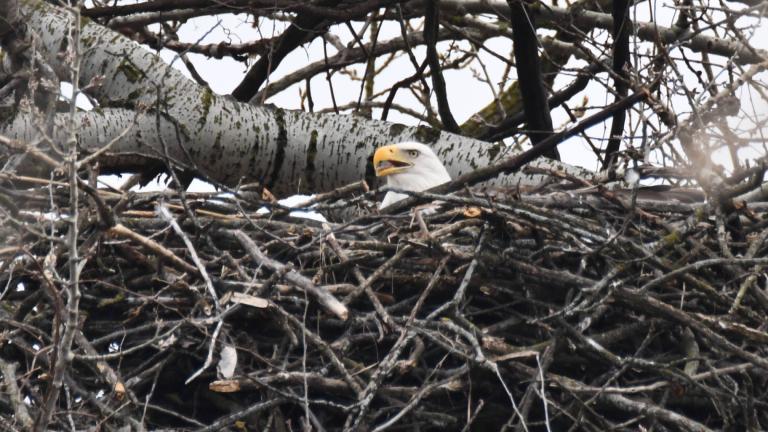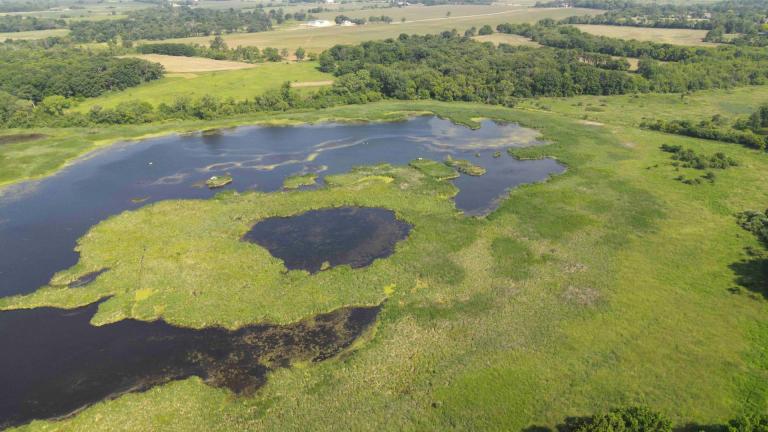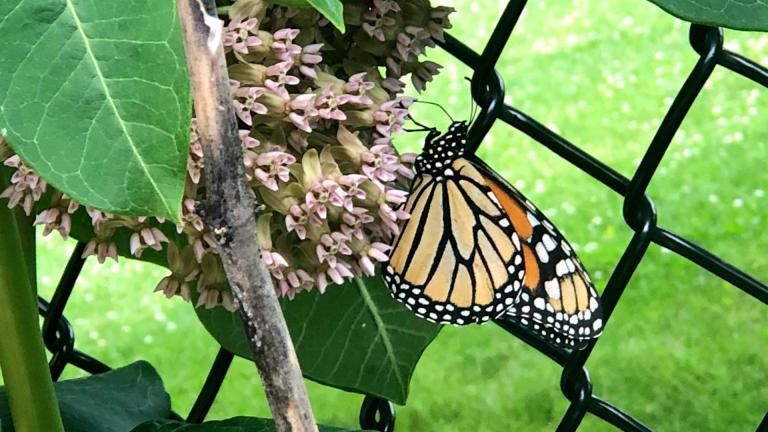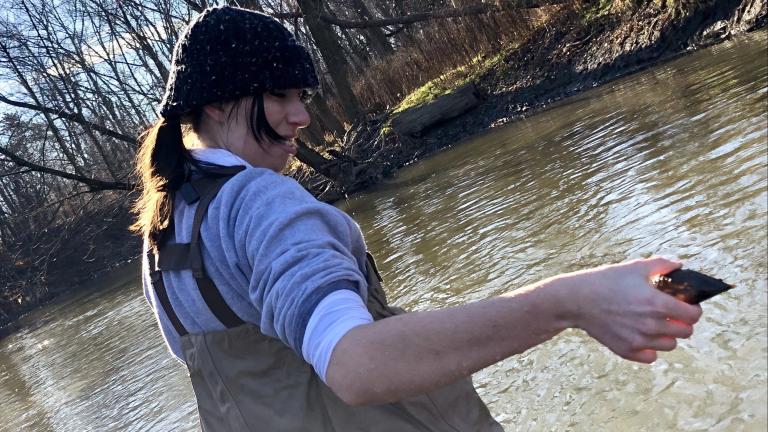 (Patty Wetli / WTTW News)
(Patty Wetli / WTTW News)
Though there are still some hardy holdouts, most trees have finally shed the bulk of their foliage. And that means it’s time to deal with all those leaves on the ground.
Or not.
Maybe you’ve heard of the “leave the leaves” movement. It’s a snappy catchphrase that, like its spring counterpart “no mow May,” seems to imply an eco-friendly, maintenance-free approach to yardwork.
Don’t toss that rake just yet. In practice, the concept is more nuanced and calls for more than a little effort.
WTTW News spoke with Chris Enroth and Abigail Garofalo, both with the University of Illinois Extension, to get the real dirt on “leave the leaves.”
First let’s start with what “leave the leaves” doesn’t mean.
“It’s not to leave them where they lie,” said Garofalo, who oversees the Conservation@Home and Master Naturalist programs for Cook County.
In particular, she said, leaves should be cleared from sidewalks, streets and other impermeable surfaces where they can not only create hazards for pedestrians but also contribute to phosphorous pollution.
Leaves are full of phosphorous, said Enroth, a horticulture expert, and whether it’s through run-off after a rain or leaves getting swept into storm sewers, they carry the fertilizer with them.
In a natural system, like a forest, most leaves stay in place but when they do wind up in streams, those waterways are teeming with organisms built for phosphorous absorption. In urban areas like Chicago, however, the concentration is so much greater and stormwater sewers lack those organic safeguards, he explained.
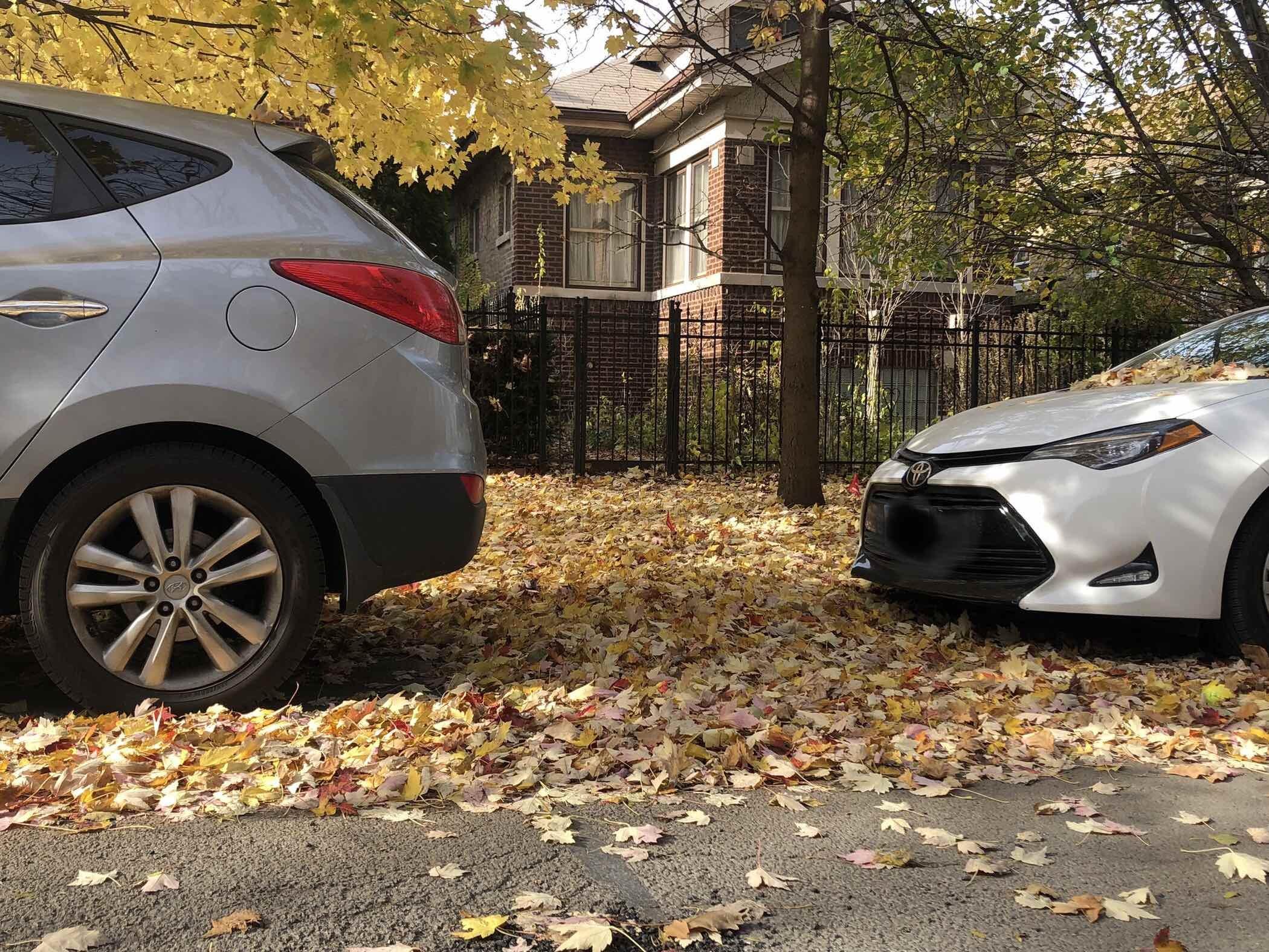 Leaves should be cleared from permeable surfaces like sidewalks and streets to help prevent phosphorous pollution. (Patty Wetli / WTTW News)
Leaves should be cleared from permeable surfaces like sidewalks and streets to help prevent phosphorous pollution. (Patty Wetli / WTTW News)
OK, so we’re moving leaves off of pavement. What about lawns?
The spirit of the “leave” part of “leave the leaves” is about keeping their nutrients within the ecosystem where they formed and eventually fall.
The core principle, Enroth and Garofalo said, is to manage the leaves on site and mimic, to the extent possible, the natural cycle of trees drawing nutrients from the earth, putting them into leaves, the leaves falling and decomposing, and those nutrients returning to the soil.
“It’s all about replicating systems that aren’t working anymore,” Garofalo said. “Historically when we mow and bag or pull leaves off the landscape, we’re taking away nutrients nature has created. We’re cutting off the ecosystem at the legs.”
What “managing” or keeping leaves on site looks like depends on the goals of individual homeowners.
Opposition to “leave the leaves” tends to center on the smothering effect leaves have on lawns, and that’s a legitimate concern, Enroth said.
A rule of thumb is that lawns can withstand 10% to 15% leaf cover, but not much more, because grass needs the sunlight, he said.
 Lawns can withstand 10% to 15% leaf cover, more than that and the grass won't receive enough sunlight. (Patty Wetli / WTTW News)
Lawns can withstand 10% to 15% leaf cover, more than that and the grass won't receive enough sunlight. (Patty Wetli / WTTW News)
Lawn-lovers don’t have to bag their leaves and set them out for waste collection, though.
Among the alternatives offered by Enroth and Garofalo: Mulching leaves directly back into the lawn, which is a good technique for getting nutrients back into the soil. They also recommend raking the leaves into garden beds for mulch.
This leaf mulch prevents erosion, suppresses weeds, provides insulation and also improves soil health, Garofalo said. And while it’s not a literal interpretation of “leaving the leaves,” it does keep them within a yard’s ecosystem.
Just be careful not to overdo it. “You don’t want to add too much that it’s so thick when it rains (the leaf pile) acts as a barrier” and deprives soil of moisture, Garofalo said.
Shredding the leaves, either with a mower or using the reverse-shredding option on a leaf blower, will help the leaves break down faster. Come spring, they’ll have disintegrated.
And, Enroth noted, the leaf-blower shredder is particularly helpful for people who have a large volume of leaves to manage.
“It can take a pile from the size of a pick-up truck down to the size of bicycle,” he said.
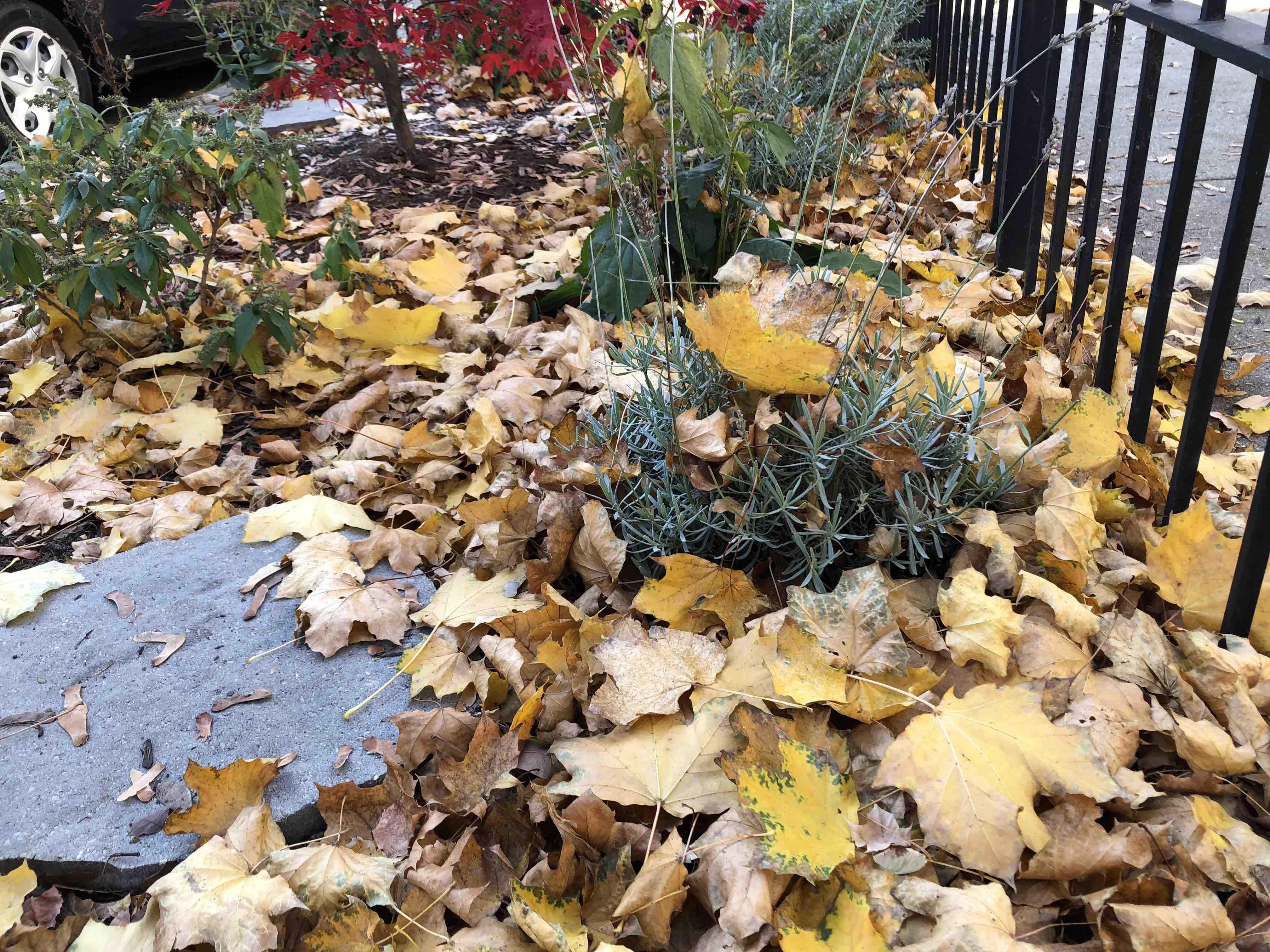 Leaves can be used as mulch in garden beds. (Patty Wetli / WTTW News)
Leaves can be used as mulch in garden beds. (Patty Wetli / WTTW News)
But what about insects? Won’t mulching and shredding harm them?
While ecologists like Garofalo tend to view “leave the leaves” through the lens of nutrient cycling, the movement has also taken hold among people concerned by reports of the precipitous loss of insects, sometimes dubbed the “insect apocalypse.”
Many of the practices used to keep lawns and gardens neat, tidy and lush — the use of pesticides and herbicides, as well as removal of leaf and plant “litter” — have contributed to this demise by robbing insects of food and habitat.
For people whose primary motivation is helping insects, then no, mulching and shredding wouldn’t be the preferred treatment of leaves, Garofalo said.
But the leaves still can be moved into garden beds or people can pile them in an area they’ve set aside for that purpose. Any insects already making a home in the leaves can likely survive a little jostling as they’re shifted to a new home, she said.
A compost pile of leaves will shelter butterflies like the mourning cloak species or swallowtail chrysalises, along with native bees, salamanders, toads and other critters over the winter.
“Debris is valuable in nature,” said Enroth.
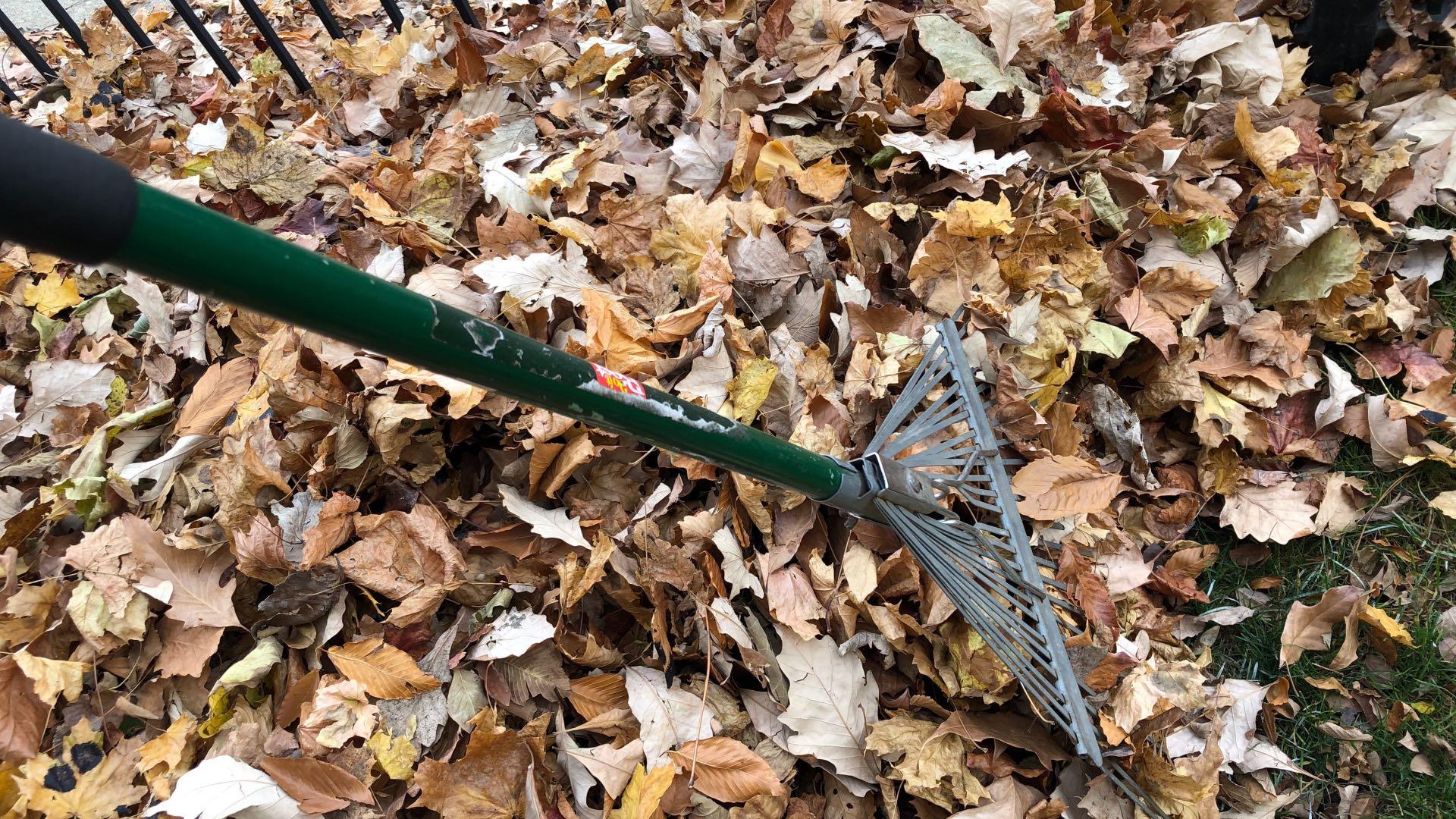 (Patty Wetli / WTTW News)
(Patty Wetli / WTTW News)
Is it evil to bag leaves?
The short answer is no.
If you’ve covered your garden beds with leaves, created a manageable compost pile and still have more leaves than you can handle, bagging up the excess doesn’t negate all the good you’ve done, Garofalo said.
“I don’t want people to think it’s an all or nothing,” she said. “It’s what you want out of your space and what your goals are. It’s a give and take.”
Just do a little bit of homework, Enroth suggested. Find out what’s done with the leaves that are hauled away from your property — is there a second life for the leaves?
It’s illegal in Illinois to send leaves to a landfill; ideally haulers are turning them into compost or mulch.
In Chicago, people can request a pickup of their bagged leaves through 311 (they shouldn’t be placed in trash or recycling bins). The city then works with a pair of vendors who compost the leaves, according to Mimi Simon, spokesperson for the Department of Streets and Sanitation.
Though the city recently identified a number of drop-off composting sites for food scraps, those locations do not accept yard waste, Simon said.
Contact Patty Wetli: @pattywetli | (773) 509-5623 | [email protected]

